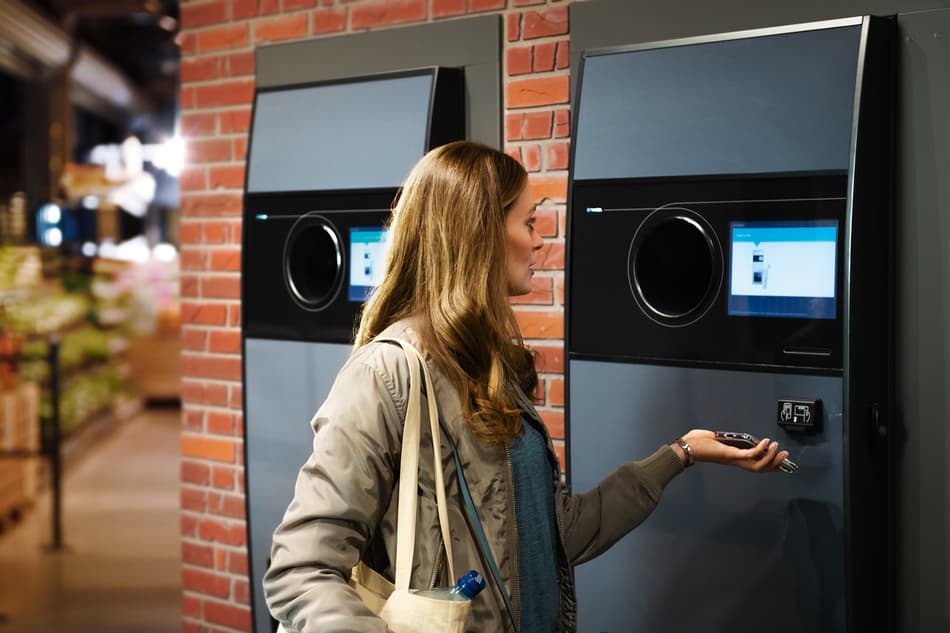
How consumer convenience can influence the success of EPR systems for packaging waste
High-performing EPR schemes are built on a combination of five design principles, with convenience being a fundamental pillar that most directly impacts a consumer’s role in the system.
Consumer demands often drive packaging trends, be it size, functionality, or recyclability. Giving consumers the convenience they demand is a major driver of change and the same approach has proven successful in Extended Producer Responsibility (EPR) schemes. Implementing easy-to-use and universally accessible collection systems maximizes consumer participation in the system and is a cornerstone of a high-performing EPR scheme for consumer packaging.
Systems that prioritize convenience also enable the achievement of high recycling rates through the combination of higher collection rates upfront, which increases the quantity of material in the system, and lowers contamination rates downstream, which improves the quality of the material in the system. For example, deposit return systems (DRS) designed with convenient features like a return-to-retail model, in which consumers can redeem used beverage containers at various purchase points, continually achieve higher collection and recycling rates.1
In TOMRA’s white paper, EPR Unpacked – A Policy Framework for a Circular Economy, the resource management experts at TOMRA explain how to increase packaging recycling rates by maximizing consumer convenience in curbside and drop-off collection systems. The complimentary white paper serves as a guide when drafting policy for packaging and offers an entire chapter dedicated to why consumer convenience matters in an EPR scheme.
Equity and easy access
All packaging covered by an EPR scheme needs collection systems with comprehensive geographical coverage and easy access. A combination of collection methods that adapt to local conditions is the most effective way to maximize the capture of materials. In urban and semi-urban settings, a system might offer curbside collection for packaging waste, whereas drop-off points within a maximum distance range could serve remote and sparsely populated areas more efficiently.
Improving recycling habits depends on cultural norms and varies greatly depending on the country or region. Collection systems should be convenient and intuitive, making them easy for consumers to understand. If consumers are not clear on how to use a system, they might cease to participate or accidentally place items in the wrong bins, leading to an increase in contamination and operational costs.

Getting in the mix to boost plastic packaging recycling
While separate collections offer tremendous value, their capture rates alone are insufficient to meet climate mitigation demands. Mixed waste sorting (MWS) before incineration or landfill is a necessary backstop to maximize recycling rates and carbon benefit. Today, there is a tremendous opportunity to leapfrog legacy systems using MWS and advanced mechanical recycling to produce high-quality recyclates for the supply chain. Mandatory EPR schemes are the most effective mechanism for providing the dedicated funding to modernize existing infrastructure or build new waste management infrastructure to close the loop on packaging.
Communication is key for steering consumer behavior
Consumer participation plays a pivotal role in the success of Extended Producer Responsibility (EPR) schemes with curbside and drop-off collection systems for packaging. As public interest in sustainability grows, keeping the public informed about the success of EPR schemes will inspire more confidence in recycling.
The world’s highest-performing recycling systems educate consumers on sorting waste, how the waste management system works, and the associated environmental benefits. Through holistic communication and outreach programs funded by EPR schemes, positive recycling behaviors can be established to help minimize contamination of the recycling stream. Clear and consistent communication is essential for achieving high participation among residents. Programs focusing on young people, such as educational material for schools and kindergartens, also carry long-lasting effects.
Producers under EPR are responsible for informational communication. In a high-performing EPR system the producers are not only incentivized to improve the recyclability of their packaging, but they are also required to cover the costs of the communication to explain how the system works. This is especially relevant as packaging and systems change over time and consumers must be made aware of how it impacts their behavior. Under EPR schemes, it is also possible to require the producer to introduce labeling measures that communicate various aspects about the packaging to the consumer, such as whether it is reusable or single-use, if it has a deposit value, the amount of recycled content, and whether it belongs in a take-back system or a dedicated bin.
High-performing EPR schemes are built on a combination of five design principles, with convenience being a fundamental pillar that most directly impacts a consumer’s role in the system. In our previous posts, we covered circularity and performance. Are you keen to find out the remaining two design principles? Watch this space and download our complimentary white paper now.
Download Circular Economy White Paper
1) TOMRA. (2021). Rewarding Recycling: Learnings from the World’s Highest-Performing Deposit Return Systems.
2) TOMRA. (2021). Holistic Resource Systems: A Framework Approach for Improving the Management of Waste and Taking Action Against Climate Change
